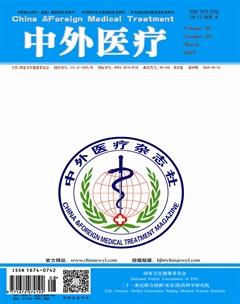成分輸血與全血輸注在搶救產科急性彌漫性血管內凝血患者臨床效果
王照軍 陸西平
[摘要] 目的 在搶救產科急性彌漫性血管內凝血患者中應用成分輸血與全血輸注,以此分析成分輸血與全血輸注對患者臨床效果的影響。方法 方便選擇產科急性彌漫性血管內凝血患者,共計100例,選擇時間于2014年3月—2015年3月期間,行不同的輸血方式:成分輸血、全血輸注,對應組別:研究組、對照組。經系統軟件分析組間的輸血后不良反應發生率、PLT、RBC、HGB、HCT、凝血酶原時間(PT)、凝血酶原時間(APTT)、FGB、凝血酶時間(TT)、D-D數據指標。 結果 研究組的輸血后不良反應發生率(4.00%)、凝血酶原時間(APTT)(25.66±3.22)s經系統軟件分析發現低于對照組,且研究組的PLT(98.22±8.76)×109/L、FGB(1.67±0.16)g/L高于對照組,差異有統計學意義(χ2=5.01,t=6.07,6.22, 7.21,P<0.05);研究組與對照組之間的RBC、HGB、HCT、凝血酶原時間(PT)、凝血酶時間(TT)、D-D數據指標差異無統計學意義(P>0.05)。 結論 成分輸血在搶救產科急性彌漫性血管內凝血患者中更為安全有效,但是,還需要依據患者的具體血液學指標進行成分輸血方案制定,以此確保搶救效果。
[關鍵詞] 成分輸血;全血輸注;產科;急性彌漫性血管內凝血;搶救;臨床效果
[中圖分類號] R457.1 [文獻標識碼] A [文章編號] 1674-0742(2019)03(b)-0039-03
[Abstract] Objective To analyze the effects of transfusion and whole blood transfusion on the clinical outcomes of patients with acute diffuse intravascular coagulation in obstetrics. Methods A total of 100 patients with acute diffuse intravascular coagulation in obstetrics were convenient selected. The selection time was from March 2014 to March 2015. Different blood transfusion methods were used: component transfusion, whole blood transfusion, corresponding group: study group, control group. The incidence of adverse reactions after transfusion, PLT, RBC, HGB, HCT, prothrombin time (PT), prothrombin time (APTT), FGB, thrombin time (TT), D-D data index were analyzed by system software. Results The incidence of adverse reactions after transfusion (4.00%) and prothrombin time (APTT) (25.66±3.22)s in the study group were lower than those in the control group, and the PLT of the study group (98.22±8.76)×109/L, FGB (1.67±0.16) g/L higher than the control group,the difference was statistically significant(χ2=5.01,t=6.07,6.22,7.21,P<0.05); there was no difference in RBC, HGB, HCT, prothrombin time (PT), thrombin time (TT), D-D data between the study group and the control group, P>0.05. Conclusion Component transfusion is safer and more effective in the rescue of patients with acute disseminated intravascular coagulation in obstetrics. However, it is also necessary to formulate a component transfusion protocol based on the specific hematological parameters of the patient to ensure the rescue effect.
[Key words] Component transfusion; Whole blood transfusion; Obstetrics; Acute diffuse intravascular coagulation; Rescue; Clinical effect
產科急性彌漫性血管內凝血具有極高的病死率,該病癥發病極為迅速,主要的病癥特點是大出血,也是目前臨床上造成孕產婦死亡的主要原因。失血性休克或過敏性休克一般是引發產科急性彌漫性血管內凝血患者的常見疾病原因,且該種病癥會早于產科急性彌漫性血管內凝血的診斷時間,新鮮全血成為了以往血液制品的主要供應方式。隨著近年來臨床輸血研究不斷發展和進步,成分血制品的應用價值受到關注和重視;在產科急性彌漫性血管內凝血患者的搶救中,成分輸血占據重大臨床作用。該文在搶救產科急性彌漫性血管內凝血患者中應用成分輸血與全血輸注(患者選擇時間于2014年3月—2015年3月期間,共計100例),以此分析成分輸血與全血輸注對患者臨床效果的影響。

